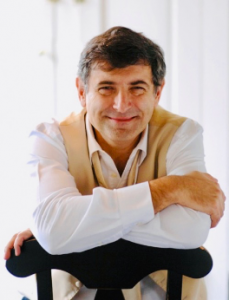#45 – June 01, 2020

SALVADOR BROTONS
SYMPHONY No 6, Op. 122 “CONCISE”
Symphony N.6 “Concise” by Spanish composer Salvador Brotons is our Composition of the Week.
https://www.youtube.com/watch?v=lPaZM0BOqig
(music starts at 1 minute, 11 sec.)
The Symphony N. 6 is considerably short and does not follow an established external program. It is characterized as pure music. It has five direct movements, without much development or thematic manipulation, hence the subtitle of “Concise”. The movements are the following:
- Frontal
- Courtship (Procession)
- Scherzo
- Passacaglia
- Finale Frontal
With a duration of about 25 minutes, the work is orchestrated for a typical Spanish band setting, including soprano and bass saxophone, flugelhorns, and optional celli and double bassoon.
“As the title suggests, is a fast movement of direct impact. A modified sonata form follows, with a spirited and energetic first theme while the second one, presented by the oboe, is lyrical and intimate. Courtship (Procession) has a ceremonial character. The main theme is presented by the trombone, over a march rhythm. Various relaxed solo interventions follow, after which a space of high tension leads to the restatement of the main theme brilliantly orchestrated. A process of relaxation closes the movement as it disintegrates. The Scherzo is short, colorful and very fast, with irregular and continuous meter changes. The rhythmic passages alternate with others of very lyrical character, along with instrumental virtuosity, give the movement great vivacity and contrast. A set of 10 notes, already presented in the Scherzo, serves as an ostinato theme of the Passacaglia. Of great dramatic development, the Passacaglia starts mysteriously in the lower register and gradually, following a complex counterpoint process, expands to reach an explosive fortissimo which links to the Finale. Lively and dynamic, the last movement has the directness of the first. Two main themes dominate the movement, the first rhythmic and determined and very expansive, and the second lyrical. Short references to themes of the first and second movements appear in the short central part to prepare an even shorter recapitulation and a brilliant Coda briefly recalling the Passacaglia”.
Program notes by the composer.
Dr. Salvador Brotons was born in Barcelona. He studied at the Barcelona Conservatory of Music, obtaining degrees in flute, composition and orchestra conducting. In 1985 he was awarded with a Fullbright scholarship and moved to the United States where he obtained his Doctorate in Music from the Florida State University.
From 1977 to 1985 he was principal flute in the Orchestra of the Liceu in Barcelona, and also a member of the Orquestra Ciutat de Barcelona (1981-1985).
As a composer, he has written more than 125 works, mainly for orchestra, chamber and wind ensembles, receiving many awards.
Salvador Brotons was Assistant Conductor of the Florida State University Symphony Orchestra (1986-1987), and Music Director and Conductor of the Oregon Sinfonietta (1990-1993), the Mittleman Jewish Community Orchestra (1989-91), and the Portland State University Symphony Orchestra (1987-1997). He also taught counterpoint, orchestra conducting, music history and music literature at Portland State University.
He has been the Conductor and Music Director of the Vancouver Symphony Orchestra (WA) since 1991. He is on the faculty of the Escola Superior de Música de Barcelona, where he teaches orchestra conducting and composition. He has been principal conductor of the Banda Simfònica de Barcelona between 2008 and 2018.
Other significant works for winds are:
Rebroll (Rebirth), 1983
Concert Trobadoresc for cello and wind ensemble (2003)
Brass Quintet Concerto, for brass quintet and symphonic band (2014)
More information on Salvador Brotons:
http://www.salvadorbrotons.org


